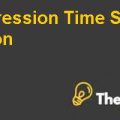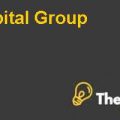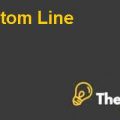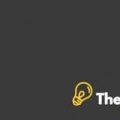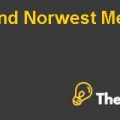Is the customer concentration at Roxbury Technology a problem? Is it an unusual problem for smaller companies? How does it occur? Would you buy a company with significant customer concentration? How does the customer concentration affect the management of Roxbury Technology?
The customer concentration at Roxbury Technology is a problem because it limits the sales of the company within the scope of those customers only. It becomes hindrance for the company to explore the other markets and to grab more customers in order to capture a significant share in the market.
It also decreases the profitability of the company as the company only focuses on such customers without exploring and exploiting opportunities in the other market. Due to which the sales of the company are limited to some extent.
Customer concentration could be a problem for the small company as a large customer could require expensive requirements which could not be fulfilled by the company due to its low budget. Moreover, big clienteles also have a tactic of justifying slow payments by using their size, variations in delivery expressions, or renegotiated prices.
A person can buy a customer concentrate company if the sole objective of the company is to serve those targeted clients or the company is involved in the business of any specialized products of which few customers are available in the market. Moreover, it is also necessary that the operations of the business are efficient enough to meet the changing needs of the customers.
If the business is such that there is a vast market of such product in which the company is involved as well as there are lots of customers into the market, then in this case it is not viable to buy a customer concentrated client.
The management of the company is effected by the customer concentration because it is unable to meet the two main goals of the company simultaneously which are reduction in customer concentration as well as increase in profitability of the company. The management has made different marketing and sales strategies but because of the customer concentration the management is unable to implement those strategies effectively and efficiently.
Moreover, the company wants to get a handsome amount of revenue from the customers other than the targeted customers, but due to customer concentration management cannot make huge sales with other customers and therefore unable to make handsome revenues from other customers. This has also affected negatively to the portfolio of the company.
Evaluate the projection for 2012 in Exhibit 2. Is it reasonable? Consider the 2012 relative to historical COGS and SGA margins. If Roxbury Technology abandoned its goal of customer diversification, how would the profitability of the company change?
In Exhibit 1, the percentage of sales of all income statement items has been calculated for each of the financial years separately. This shows that the major difference in the 2012 budget as compared to other two financial years is the % of EBITDA to sales. In financial year 2010, the percentage of EBITDA to sales was 0% because it had incurred a loss, whereas in financial year 2011 the company increased this percentage to 1% however, the budget of 2012 shows that the percentage of EBITDA to sales would be 10%, which needs few persuasive and convincing justifications as to why the management has forecasted such huge percentage keeping in view the current position of the company.
Moreover, there is also a change in SG&A’s expenditures, SG&A’s expenditures in the financial years 2010 and 2011 were 21% of the revenue in the budget prepared by the management, the management has forecasted that the SG&A expenses would be 16% of the revenue in the financial year 2012. This shows a difference related to existing trend of SG&A expenses of the company.
Roxbury Technology Corporation Case Solution
In exhibit 2, in the template for students it is shown that if the budgeted income statement made by the management is compared with the historic COGS and SGA margins it is clear that the total cost of goods sold is comparatively low in the budget as compared to Cost of Goods Sold in the historic COGS and SGA margins. This has increased the gross profit of the company which has subsequently increase EBITDA from 6% to 10%.
If the company abandons its goal of diversification of the customers, then it will result in reduction of overall profitability of the company as the company would not be able to make a large number of sales from other customers................
This is just a sample partial case solution. Please place the order on the website to order your own originally done case solution.


